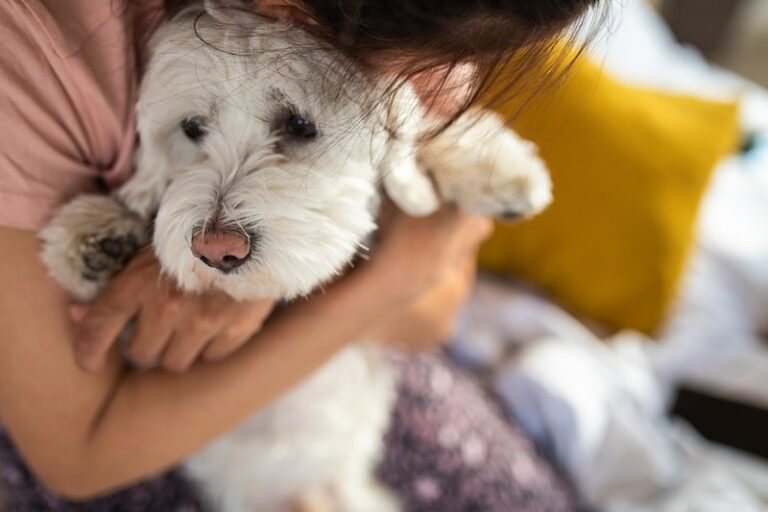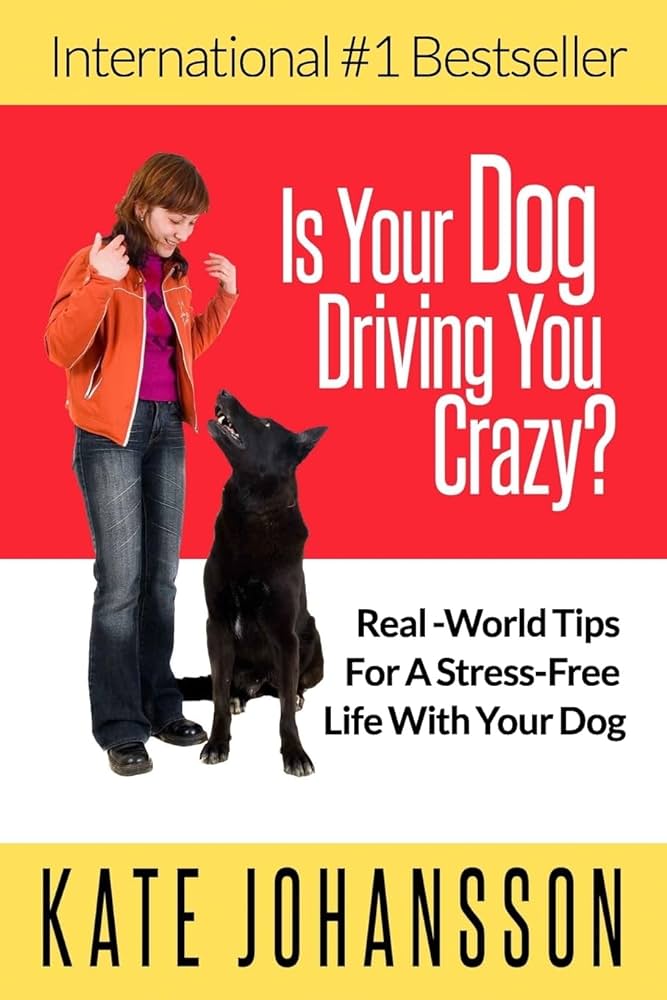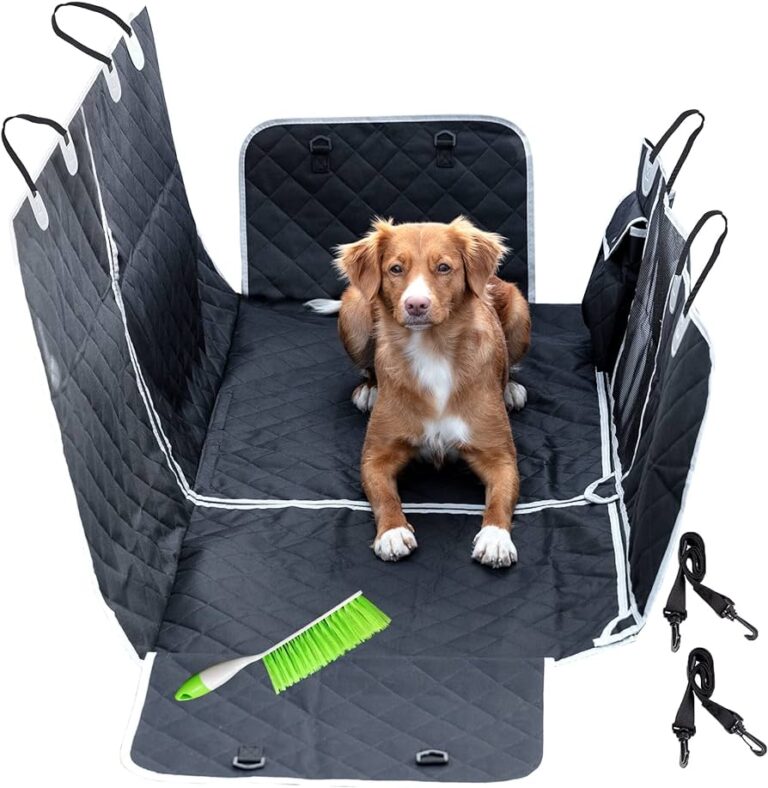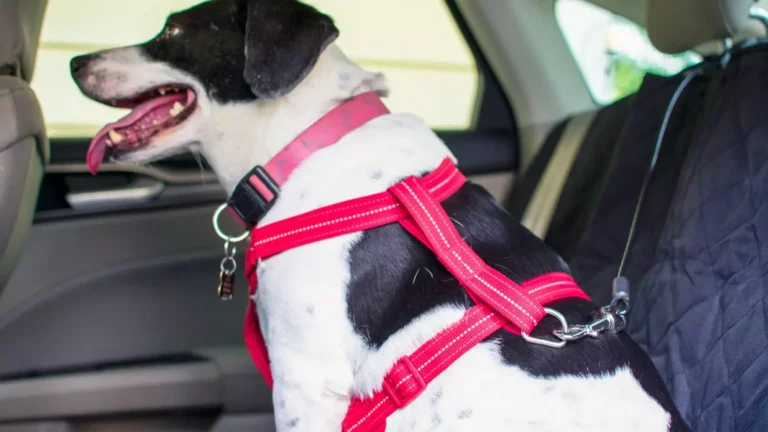Do Dogs Need Car Seats? Ensuring Pet Safety on the Road
Dogs need car seats for safety and comfort during travel. Car seats prevent injuries and keep dogs secure.
Traveling with dogs can be challenging without proper safety measures. Car seats for dogs ensure they remain protected and comfortable. These seats reduce the risk of injury in case of sudden stops or accidents. They also prevent dogs from distracting drivers, contributing to a safer journey.
Dog car seats come in various sizes and designs, accommodating different breeds and car types. Investing in a quality car seat enhances your pet’s travel experience and provides peace of mind. Prioritizing your dog’s safety on the road is essential for responsible pet ownership.
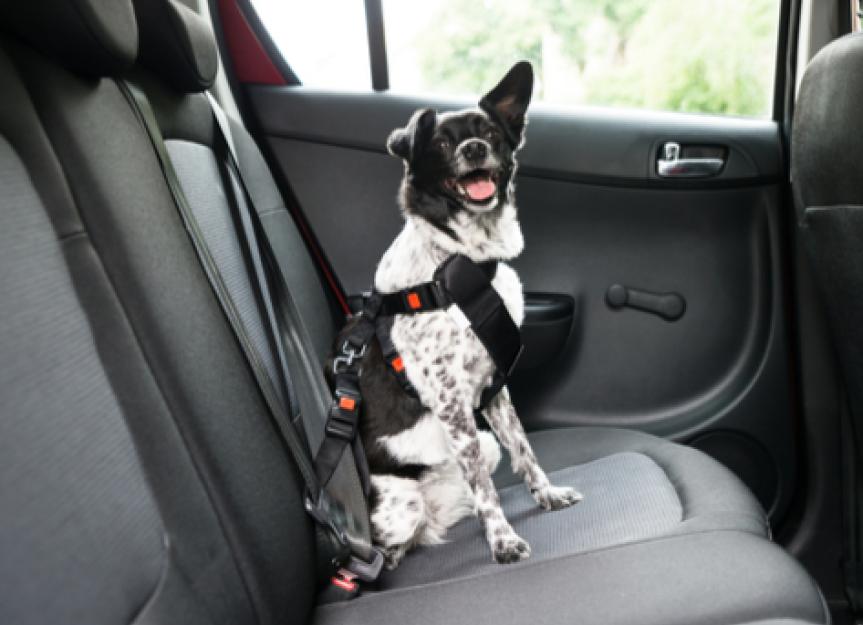
Credit: www.petmd.com
The Importance Of Pet Safety During Travel
Traveling with your dog can be a joyful experience. But it’s crucial to consider pet safety during travel. Many pet owners overlook the risks associated with unrestrained pets in vehicles. Ensuring your dog is secure can prevent accidents and injuries, keeping both you and your furry friend safe.
Risks Of Unrestrained Pets
Unrestrained pets can become projectiles in a crash. This puts them and other passengers at risk. Dogs can also distract drivers, leading to accidents. Unsecured pets might escape through open windows, causing chaos and danger. A loose dog can interfere with driving controls, increasing accident chances. Using a car seat can mitigate these risks effectively.
Benefits Of Securing Your Dog
Securing your dog enhances safety for everyone in the car. A dog car seat or harness can prevent distractions. It ensures your dog stays in one place. This keeps them calm and comfortable during the journey. Secured dogs are less likely to be injured in sudden stops or crashes. Here are some key benefits of using a dog car seat:
| Benefit | Description |
|---|---|
| Safety | Reduces the risk of injury in accidents. |
| Comfort | Keeps your dog in a stable position. |
| Driver Focus | Prevents distractions caused by roaming pets. |
| Escape Prevention | Stops dogs from jumping out of windows. |
Investing in a dog car seat is a simple step to enhance travel safety. Your dog’s well-being is worth it.
What Are Dog Car Seats?
Dog car seats are specially designed seats that ensure your pet’s safety and comfort while traveling by car. These seats keep your furry friend secure during sudden stops and sharp turns. They also prevent distractions for the driver, making the journey safer for everyone.
Types Of Dog Car Seats
There are various types of dog car seats available, each catering to different needs and sizes of dogs. Below are some common types:
- Booster Seats: These seats elevate your dog, allowing them to look out the window.
- Bucket Seats: Designed like a small bucket, providing a snug and secure space for your dog.
- Console Seats: Placed between the front seats, ideal for small dogs who like to be close to the driver.
- Bench Seats: Cover the back seat, offering a larger space for bigger dogs.
- Hammock Seats: Create a hammock-like space, providing comfort and reducing movement.
How They Differ From Carriers
Dog car seats and carriers serve different purposes. Car seats are often open and provide a view for the dog, while carriers are enclosed and limit movement. Below is a table highlighting their key differences:
| Feature | Dog Car Seats | Dog Carriers |
|---|---|---|
| Design | Open, allowing visibility | Enclosed, restricting view |
| Purpose | Provides comfort and security | Used for transport and containment |
| Attachment | Secures to car seat | Portable, often with handles |
| Size Options | Varies, can be large | Usually smaller |
Legal Requirements For Pet Travel
Traveling with your dog can be fun, but it’s important to know the legal rules. Each state has different laws about pet travel. Knowing these rules can help you avoid fines and keep your dog safe.
State-specific Regulations
Each state in the USA has its own rules for traveling with pets. Some states require dogs to be in a car seat or harness. Others might have different rules. Check the laws in your state before traveling.
| State | Regulation |
|---|---|
| California | Dogs must be restrained. |
| New Jersey | Dogs need a harness or crate. |
| Connecticut | Pets must be secured in a crate. |
Penalties For Non-compliance
Not following pet travel rules can result in fines. The fines can be heavy. In some states, you could face a penalty of up to $1,000.
- California: Up to $250 fine.
- New Jersey: Fines up to $1,000.
- Connecticut: Up to $200 fine.
Following the rules can keep your dog safe and save you money. Always check the laws before starting your trip.
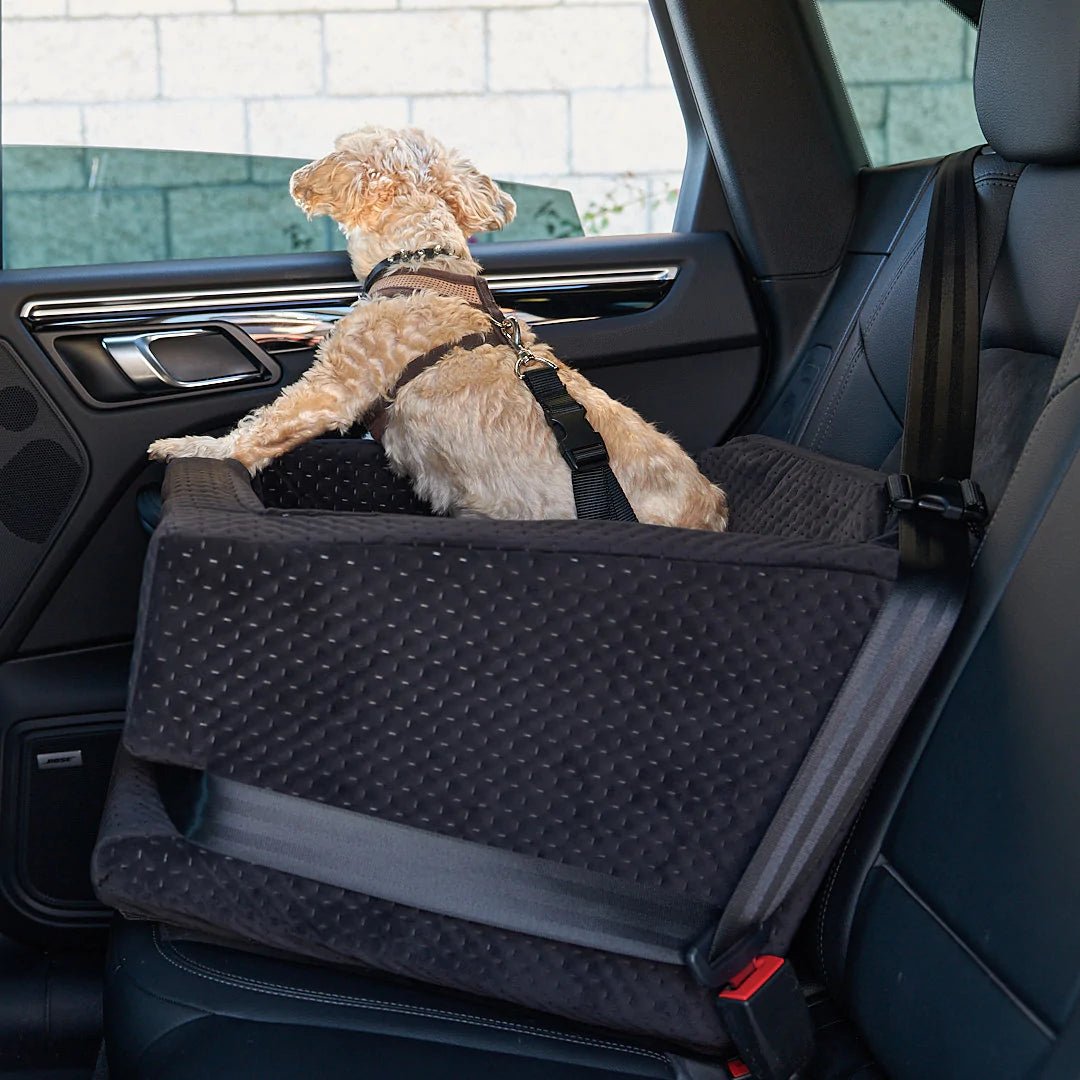
Credit: animalsmatter.com
Selecting The Right Car Seat For Your Dog
Ensuring your dog’s safety during car rides is crucial. Selecting the right car seat for your dog can make all the difference. It not only keeps them secure but also provides comfort during travel. This guide will help you choose the best car seat for your furry friend.
Size And Fit Considerations
The size and fit of the car seat are vital. A seat too large or too small can be unsafe. Measure your dog’s height, length, and weight before purchasing. Compare these measurements with the car seat’s specifications.
Here’s a simple table to guide you:
| Dog Size | Weight Range | Recommended Car Seat Size |
|---|---|---|
| Small | Up to 15 lbs | Small |
| Medium | 16-40 lbs | Medium |
| Large | 41-70 lbs | Large |
| Extra Large | 71 lbs and above | Extra Large |
Material And Durability
The material and durability of the car seat are equally important. Choose a car seat with high-quality, durable materials. This ensures it withstands wear and tear.
Look for materials that are:
- Waterproof
- Scratch-resistant
- Easy to clean
Durability ensures the car seat lasts long and remains safe for your dog. A good car seat should have sturdy straps and firm buckles. These keep your dog secure during sudden stops or sharp turns.
Comfort is also crucial. Consider seats with extra padding and soft fabric covers. These features make the ride pleasant for your dog.
Choosing the right car seat involves considering both size and material. Ensuring these factors will keep your dog safe and comfortable on every journey.
Installation Of Dog Car Seats
Installing a dog car seat is essential for your pet’s safety during car rides. Proper installation ensures that the seat stays secure and your dog is comfortable. Follow these steps to make sure the car seat is installed correctly.
Step-by-step Guide
- Choose the Right Seat: Select a car seat that fits your dog’s size and weight. Ensure it has safety features like harness attachments.
- Read the Manual: Always read the manufacturer’s instructions. Each car seat may have different installation steps.
- Position the Seat: Place the car seat in the back seat of your car. This is the safest spot for your dog.
- Attach the Straps: Use the seatbelt or the car’s latch system to secure the car seat. Make sure it doesn’t move.
- Adjust the Harness: Attach your dog’s harness to the car seat. Adjust it so your dog can sit comfortably but cannot jump out.
- Check for Stability: Give the seat a gentle shake to ensure it is properly secured. It should not wobble or slide.
Common Mistakes To Avoid
- Skipping the Manual: Always read the instructions. Skipping this step can lead to incorrect installation.
- Improper Strapping: Make sure the car seat is tightly secured. Loose straps can be dangerous.
- Wrong Seat Placement: Never place the dog car seat in the front seat. Airbags can injure your dog.
- Ignoring Weight Limits: Use a car seat designed for your dog’s weight. Overloading can break the seat.
Training Your Dog To Use A Car Seat
Ensuring your dog’s safety during car rides is essential. A dog car seat provides security and comfort. Training your dog to use a car seat can be easy with the right techniques. Let’s explore some effective methods.
Acclimation Techniques
Acclimating your dog to a car seat is the first step. Start by introducing the car seat inside your home. This way, your dog can become familiar with it in a safe environment.
- Place the car seat in a quiet area of your home.
- Allow your dog to sniff and explore the seat.
- Encourage your dog to sit in the seat using treats.
Once your dog is comfortable, move the car seat to your vehicle. Let your dog explore the car seat in the car before taking any trips. This gradual exposure helps reduce anxiety.
Positive Reinforcement Strategies
Positive reinforcement is key to successful training. Use treats and praise to reward your dog for sitting in the car seat.
- Start with short sessions in the car seat.
- Give your dog a treat for staying calm and seated.
- Gradually increase the duration of these sessions.
Consistency is important. Always reward your dog for using the car seat. This reinforces the behavior and helps your dog associate the seat with positive experiences.
| Step | Description |
|---|---|
| 1 | Introduce the car seat at home. |
| 2 | Encourage exploration with treats. |
| 3 | Move the car seat to the car. |
| 4 | Reward calm behavior with treats. |
By following these steps, your dog will be more comfortable in their car seat. This ensures a safer and more enjoyable travel experience for both of you.
Safety Features To Look For
Ensuring your dog’s safety during car rides is essential. Choosing the right car seat can prevent injuries and provide peace of mind. Here are some key safety features to look for when selecting a car seat for your furry friend.
Harness And Strap Security
A secure harness system is vital. Make sure the car seat has adjustable straps that fit snugly around your dog. Straps should be made of durable materials, like nylon. They should withstand wear and tear. Look for a harness that distributes pressure evenly. This avoids choking or discomfort.
It’s also important to have multiple attachment points. This ensures that the seat remains stable during sudden stops. Some seats come with extra straps to anchor to the car’s seatbelt system. This provides added security.
Crash Testing And Certification
Always check if the car seat has been crash-tested. Look for certifications from reputable organizations. Certifications can include those from the Center for Pet Safety or similar bodies. These certifications guarantee the seat has passed rigorous testing.
Crash testing ensures the seat can protect your dog in an accident. It’s a feature that should not be overlooked. A crash-tested seat offers more than just a place for your dog to sit. It provides a proven level of protection.
| Feature | Importance |
|---|---|
| Adjustable Straps | High |
| Durable Materials | High |
| Multiple Attachment Points | Medium |
| Crash Testing | Very High |
| Certifications | Very High |
By focusing on these key safety features, you can ensure your dog is safe and secure during every car ride. A well-chosen car seat is an investment in your pet’s well-being.
Maintaining And Cleaning Dog Car Seats
Dog car seats need regular care for safety and comfort. Proper maintenance ensures a longer lifespan and a cleaner ride for your pet. Follow these tips to keep your dog car seat in top condition.
Routine Maintenance Tips
Regular checks on your dog car seat can save you time and money. Here are some tips:
- Inspect the straps and buckles monthly for wear and tear.
- Tighten any loose screws or bolts to ensure safety.
- Use a handheld vacuum to remove hair and debris from the seat surface.
- Check the seat cover for any rips or holes.
- Lubricate metal parts to prevent rust and ensure smooth operation.
Effective Cleaning Solutions
Keeping the dog car seat clean is essential for hygiene. Here are some effective cleaning solutions:
| Solution | Usage |
|---|---|
| Mild Soap and Water | Use for regular cleaning of the seat cover and straps. |
| Baking Soda | Sprinkle on the seat and vacuum after 15 minutes to remove odors. |
| Vinegar Solution | Mix equal parts of water and vinegar. Use to clean and disinfect. |
| Lint Roller | Quickly remove pet hair from the seat cover. |
For tough stains, use a pet-safe stain remover. Always follow the manufacturer’s instructions for cleaning.
Alternatives To Dog Car Seats
When it comes to ensuring your dog’s safety while traveling, dog car seats are popular. But, there are several alternatives to dog car seats that can keep your furry friend secure and comfortable. Let’s explore some of these options.
Dog Seat Belts
Dog seat belts are a practical and affordable option. They attach to your car’s seat belt system and clip onto your dog’s harness. This prevents your dog from moving around too much and keeps them safe in case of sudden stops.
- Easy to use and install
- Affordable and widely available
- Keeps dogs secure in their seat
One key benefit of using a dog seat belt is that it allows your dog to sit or lie down comfortably. This makes it a great option for both short trips and long journeys.
Travel Crates And Barriers
Travel crates and barriers provide another excellent alternative for ensuring your dog’s safety in the car. Crates offer a confined space, reducing the risk of injury during sudden stops or accidents.
| Travel Crates | Barriers |
|---|---|
| Provides a secure, enclosed space | Blocks access to front seats |
| Ideal for anxious dogs | Allows more freedom of movement |
| Can be used outside the car | Easy to install and remove |
Travel crates come in various sizes and materials, making it easy to find one that fits your dog’s needs. Barriers, on the other hand, are great for larger vehicles like SUVs. They keep your dog in the backseat or cargo area, preventing distractions while driving.
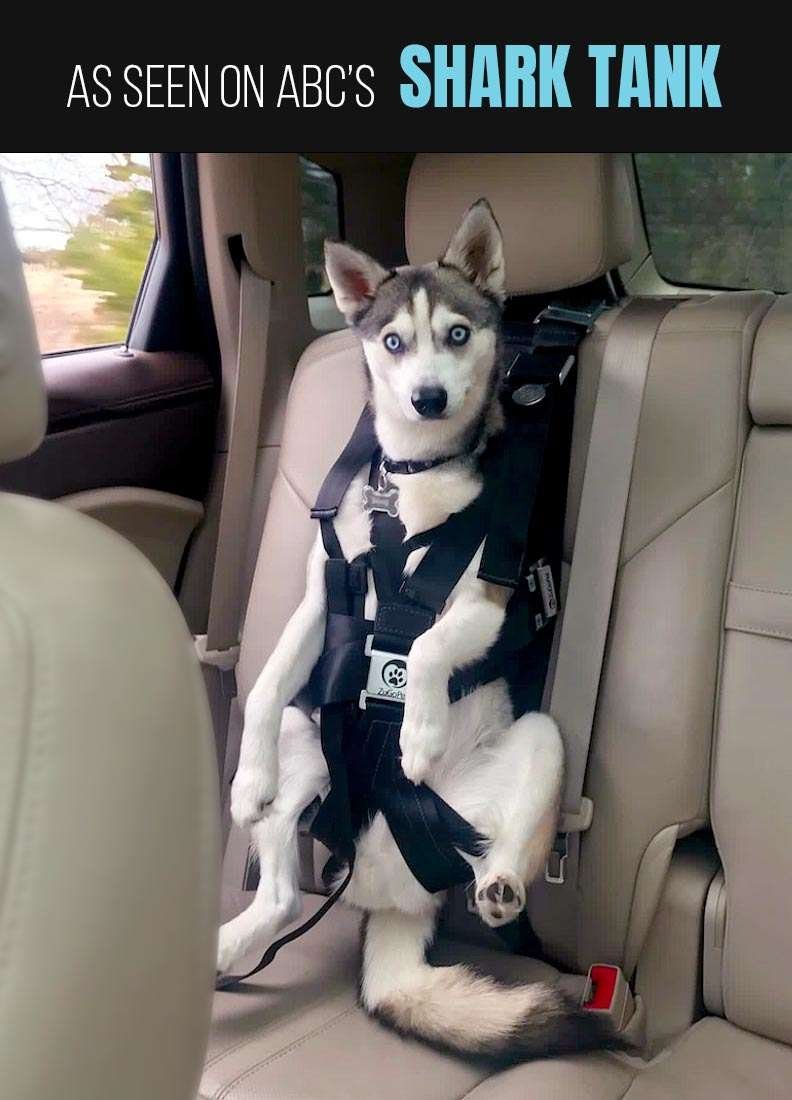
Credit: zugopet.com
Personal Stories And Testimonials
Many dog owners share their experiences about using car seats for their furry friends. These stories highlight the importance and benefits of keeping dogs secure in vehicles. Below, we have gathered some real-life accounts that emphasize the value of car seats for dogs.
Real-life Accidents And Lessons Learned
Jane’s Story: Jane was driving with her dog, Max, when another car rear-ended them. Max was not in a car seat and got thrown forward. He sustained minor injuries. Jane realized the importance of dog car seats that day.
Tom’s Experience: Tom was driving on a highway with his dog, Bella. Suddenly, a tire burst. Bella, who was in a dog car seat, stayed secure. Without the seat, she could have been severely injured.
| Owner | Incident | Outcome |
|---|---|---|
| Jane | Rear-ended | Dog injured, learned value of car seats |
| Tom | Tire burst | Dog safe, car seat prevented injuries |
Positive Outcomes From Using Car Seats
Emily’s Testimonial: Emily always used a car seat for her dog, Daisy. Daisy felt secure and calm during trips. Emily noticed fewer distractions while driving.
David’s Story: David travels frequently with his dog, Rocky. Using a car seat, Rocky stays comfortable and safe. David feels more at ease knowing Rocky is protected.
- Emily: Dog is calm, fewer driving distractions
- David: Dog is comfortable, driver feels at ease
These stories highlight how dog car seats can prevent injuries and provide peace of mind. They show the importance of keeping our furry friends secure and safe during car rides.
Frequently Asked Questions
Does Your Dog Have To Be In A Car Seat?
No, dogs don’t have to be in a car seat. However, using one ensures their safety and reduces distractions.
What Is The Safest Way To Travel With A Dog In The Car?
Use a crash-tested crate or dog seatbelt harness. Secure your dog in the back seat. Ensure good ventilation. Take regular breaks for exercise and hydration. Avoid letting your dog hang its head out of the window.
Are Dog Car Seats Worth It?
Yes, dog car seats are worth it. They enhance safety, prevent distractions, and provide comfort for your pet during travel.
Can Dogs Sit In The Passenger Seat?
Yes, dogs can sit in the passenger seat. Use a seatbelt harness for safety. Avoid airbags deployment risk.
Conclusion
Ensuring your dog’s safety during car rides is essential. Car seats provide security and comfort for your furry friend. They help prevent distractions and reduce injury risks. Investing in a dog car seat can enhance travel experiences for both you and your pet.
Prioritize your dog’s well-being on every journey.
- Can I Get in a Taxi Without a Car Seat? - January 26, 2025
- Can I Get Chlamydia From a Toilet Seat? - January 26, 2025
- Can I Get an Uber With a Car Seat? - January 26, 2025


